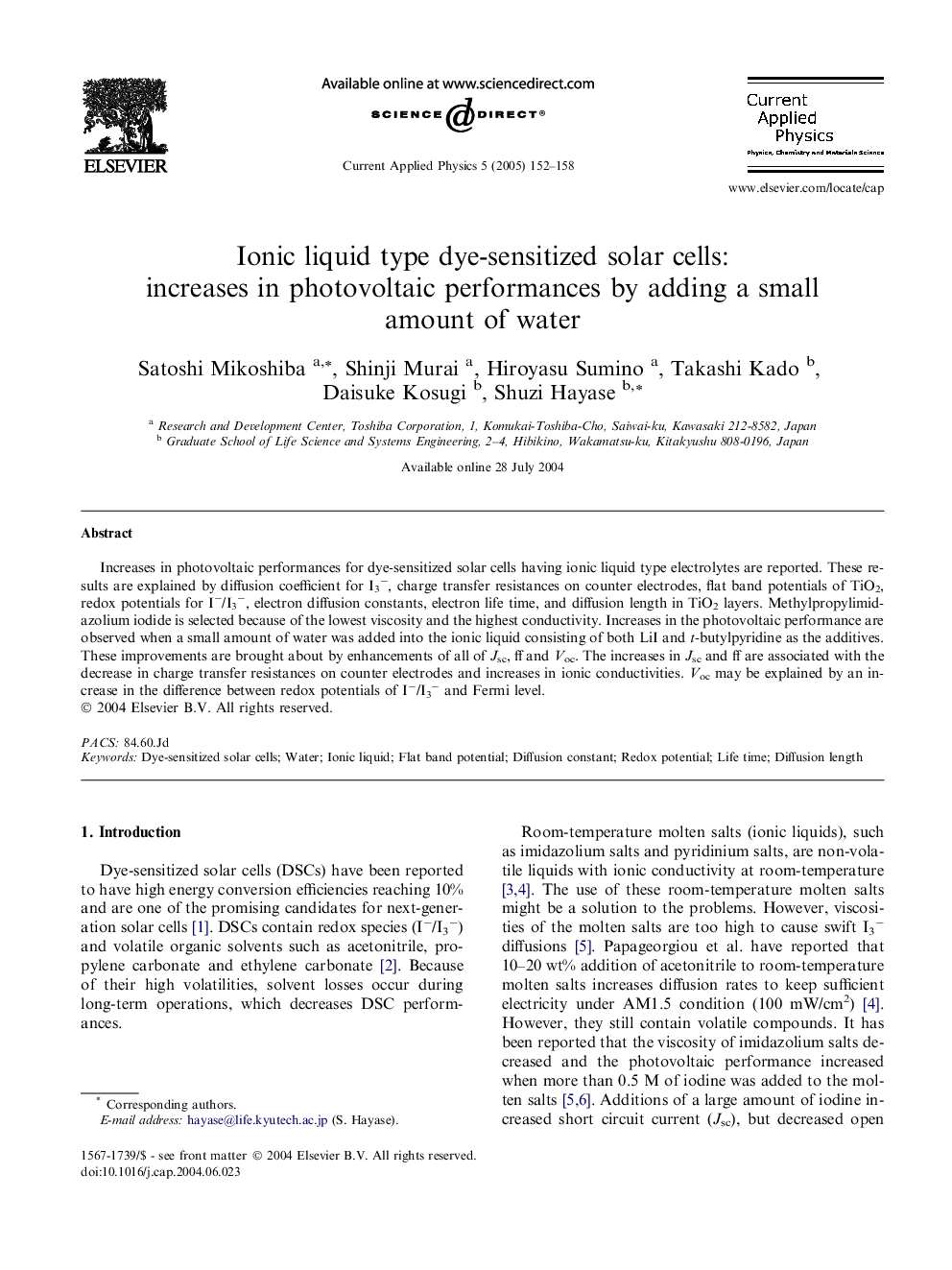| Article ID | Journal | Published Year | Pages | File Type |
|---|---|---|---|---|
| 10706906 | Current Applied Physics | 2005 | 7 Pages |
Abstract
Increases in photovoltaic performances for dye-sensitized solar cells having ionic liquid type electrolytes are reported. These results are explained by diffusion coefficient for I3â, charge transfer resistances on counter electrodes, flat band potentials of TiO2, redox potentials for Iâ/I3â, electron diffusion constants, electron life time, and diffusion length in TiO2 layers. Methylpropylimidazolium iodide is selected because of the lowest viscosity and the highest conductivity. Increases in the photovoltaic performance are observed when a small amount of water was added into the ionic liquid consisting of both LiI and t-butylpyridine as the additives. These improvements are brought about by enhancements of all of Jsc, ff and Voc. The increases in Jsc and ff are associated with the decrease in charge transfer resistances on counter electrodes and increases in ionic conductivities. Voc may be explained by an increase in the difference between redox potentials of Iâ/I3â and Fermi level.
Keywords
Related Topics
Physical Sciences and Engineering
Physics and Astronomy
Condensed Matter Physics
Authors
Satoshi Mikoshiba, Shinji Murai, Hiroyasu Sumino, Takashi Kado, Daisuke Kosugi, Shuzi Hayase,
